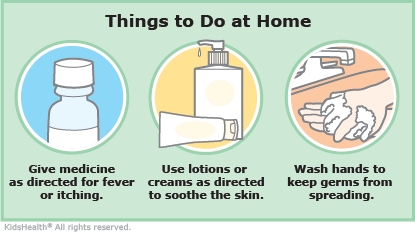Sometimes when kids have an infection from a virus (usually a cold or a stomach virus), they can also get a viral rash. A viral rash may be itchy, but usually it's not painful. The viral rash can happen while the child has symptoms of a viral illness (such as fever, cold symptoms, headache, diarrhea, sore throat, or body aches) or after the symptoms of the viral illness are better.
A viral rash doesn't need any treatment and usually goes away within a few days. You can help your child feel comfortable until the rash goes away.



Your child:

What do viral rashes look like? Viral rashes can look red and flat, raised, or bumpy. Some viral rashes have blisters. The rash can cover large parts of the body or just be in one or a few areas. Many different viruses can cause viral rashes that look similar. Your health care provider might not be able to tell the exact virus causing a rash. This is OK because treatment is the same.
How long does a viral rash last? Most viral rashes go away within a few days. Sometimes the rash lasts longer and takes 2–3 weeks to clear up. Antibiotics do not treat viruses or viral rashes and will not help a viral rash go away.